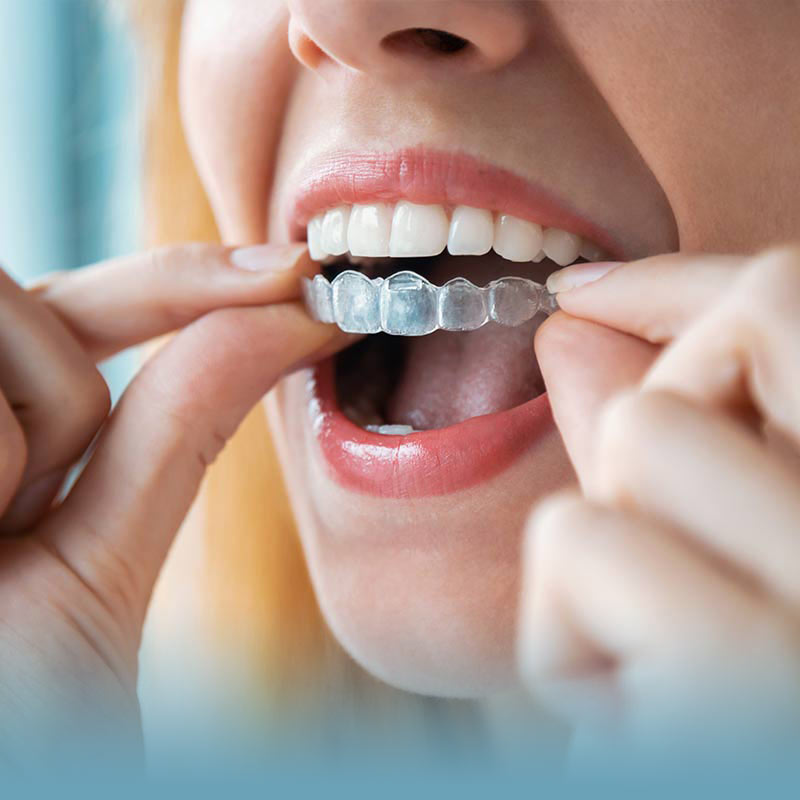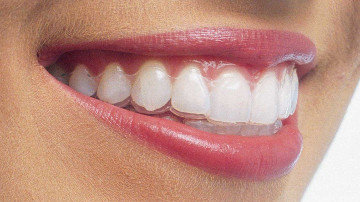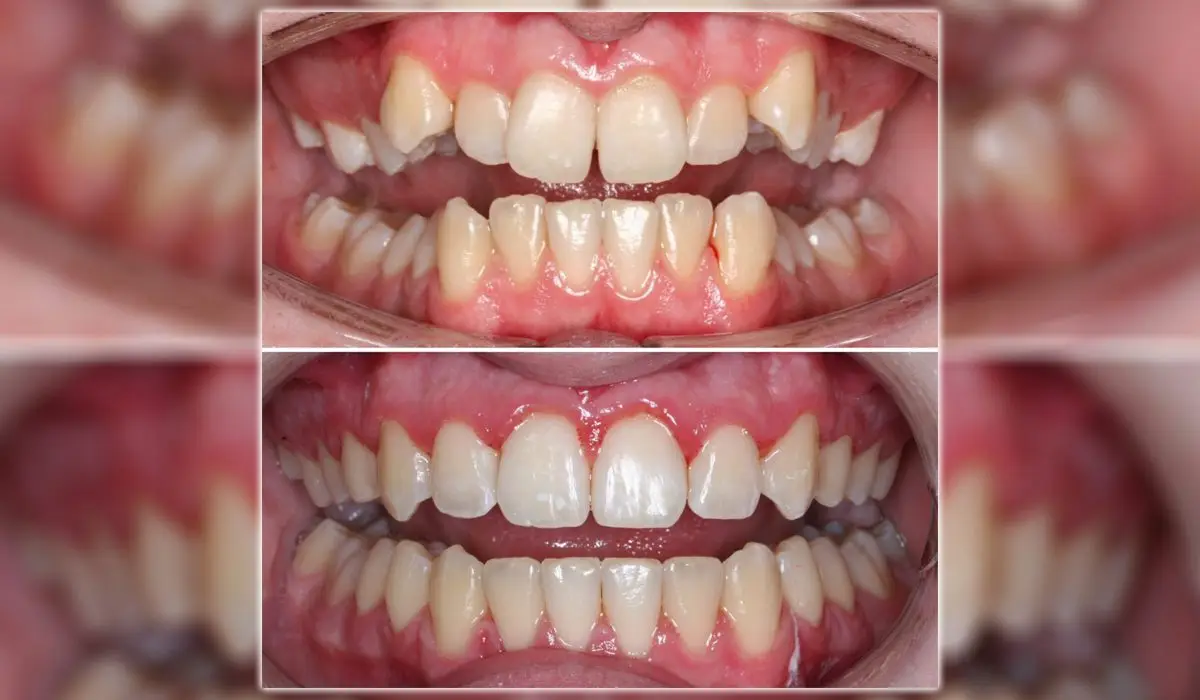Invisalign vs. Traditional Dental braces: Which Choice Is Right for You?
When taking into consideration orthodontic therapy, the option in between Invisalign and standard braces presents numerous vital factors that merit careful assessment. Invisalign supplies a discreet alternative with removable aligners, while traditional braces give an extra noticeable yet effective service for extreme imbalance.
Summary of Therapy Alternatives

In contrast, standard dental braces are composed of steel brackets and cables that are bound to the teeth. This method uses constant pressure in time to attain placement. While effective for intricate orthodontic issues, traditional dental braces require routine sees for adjustments and can posture challenges in maintaining oral hygiene due to the trouble of cleansing around cables and braces.
Both options have their advantages, and the selection frequently depends upon certain oral problems, lifestyle preferences, and client conformity. Inevitably, getting in touch with an orthodontic professional is crucial for figuring out the most appropriate treatment plan customized to individual demands. Understanding the nuances of each alternative can dramatically influence the overall success of orthodontic therapy.
Visual Considerations
A significant element affecting the choice in between Invisalign and typical braces is the aesthetic appeal each therapy uses. Invisalign aligners are crafted from clear plastic, making them essentially invisible when used. This discreet look is specifically interesting adults and teenagers that may feel uncomfortable concerning their orthodontic therapy. The capacity to keep a natural smile throughout the alignment procedure can considerably boost the individual's confidence in specialist and social settings.
On the other hand, typical braces contain metal braces and cables, which can be extra recognizable. While innovations in orthodontic innovation have resulted in the development of smaller braces and colored elastics, standard dental braces still maintain a more obvious profile. For some people, the visibility of braces might deter them from looking for necessary therapy.
Ultimately, the choice between Invisalign and standard braces might depend upon individual preferences pertaining to visual appeals. People who prioritize discretion often lean towards Invisalign, while those who are much less concerned concerning visibility might select standard dental braces. Comprehending the aesthetic implications of each option is essential for making an informed decision that straightens with one's way of life and preferences.
Convenience and Convenience

In regards to ease, Invisalign aligners are detachable, enabling clients to appreciate their preferred foods without restriction and preserve ideal dental health. Cleaning and flossing are streamlined, as the aligners can be gotten throughout these regimens, whereas standard dental braces need mindful steering around braces and cables.
In comparison, traditional dental braces demand regular modifications, making them much less hassle-free for those with hectic schedules. In general, the comfort and benefit of Invisalign make it an attractive choice for lots of people looking for orthodontic therapy.
Therapy Duration and Efficiency
While both Invisalign and typical braces are effective in dealing with oral misalignments, the period of treatment can vary substantially in between both choices. Generally, Invisalign therapy can take anywhere from 12 to 18 months, depending upon the complexity of the situation. The clear aligners work by progressively shifting teeth into their desired settings, and routine follow-ups with an orthodontist aid make sure development continues to be on the right track.
On the other hand, conventional dental braces usually need a longer commitment, usually ranging from 18 months to 3 years. This is due to their fixed nature and the use of cables and brackets, which can be extra efficient for intricate instances and serious imbalances (Invisalign). The treatment effectiveness of standard dental braces is well-documented, as they enable specific changes and better control over tooth motion
Eventually, the choice between Invisalign and typical braces may pivot on both the expected therapy period and the certain oral issues handy. Consulting with an orthodontist is important, as they can give customized recommendations based on individual demands, ensuring the chosen method straightens with desired end results and durations.
Cost Contrast and Insurance Coverage Alternatives
Price plays a significant role in the decision-making process for people thinking about orthodontic click for info therapy, whether selecting Invisalign or standard dental braces. On standard, the cost of Invisalign arrays from $3,000 to $8,000, while typical dental braces commonly set you back between $2,000 and $6,000. Elements influencing these costs include the complexity of the situation, the duration of therapy, and geographical place.
Lots of oral insurance coverage strategies offer partial insurance coverage for orthodontic therapies, but the specifics can differ commonly. Typically, standard dental braces might be much more frequently covered by insurance plans compared to Invisalign, which some insurance providers classify as an aesthetic treatment.
Additionally, numerous orthodontic techniques supply adaptable layaway plan, making both therapy alternatives much more easily accessible. Clients should ask about possible funding alternatives and discounts for ahead of time repayments. Evaluating the complete price, consisting of insurance policy advantages and payment strategies, is crucial for making an informed decision that lines up with both aesthetic preferences and spending plan considerations.

Conclusion
In summary, the choice in between Invisalign and conventional dental braces hinges on numerous variables, consisting of aesthetic choices, convenience, treatment period, and cost. Invisalign offers a very discreet, removable alternative that assists in dental hygiene and dietary adaptability, while traditional dental braces may be better for complicated oral issues and frequently come with a reduced rate point. Inevitably, assessment with an orthodontist is necessary to examine individual situations and identify one of the most proper therapy option for attaining optimal dental placement.
When thinking about orthodontic therapy, the option in between Invisalign and traditional dental braces offers numerous vital factors that merit careful examination.Contrasting Invisalign and standard more helpful hints dental braces reveals distinct treatment options for orthodontic modification.While both Invisalign and conventional braces are reliable in correcting dental imbalances, the duration of therapy can vary considerably between the two choices.Cost plays a considerable role in the decision-making procedure for people considering orthodontic therapy, whether opting for Invisalign or conventional dental braces.In summary, the choice in between Invisalign and typical braces pivots on numerous variables, consisting of aesthetic choices, convenience, treatment duration, and you could look here cost.